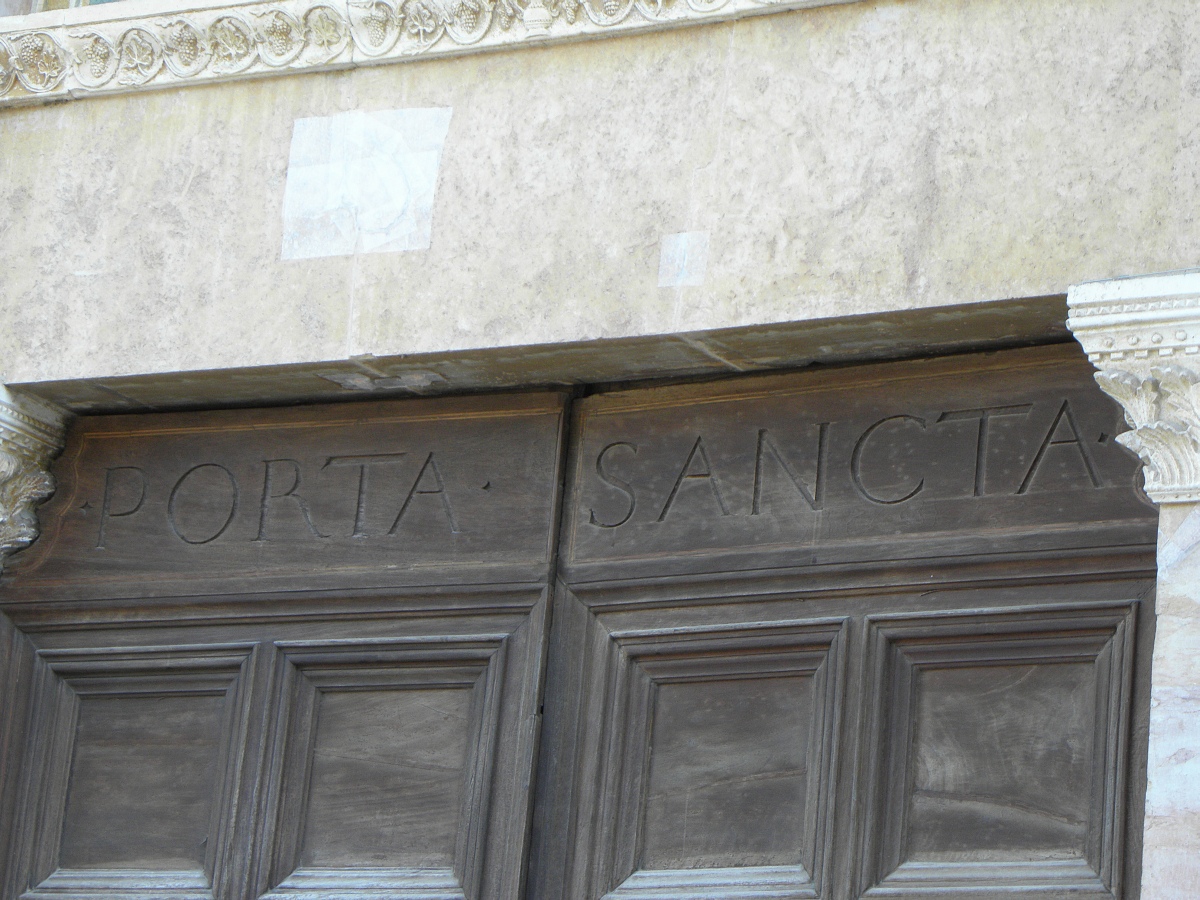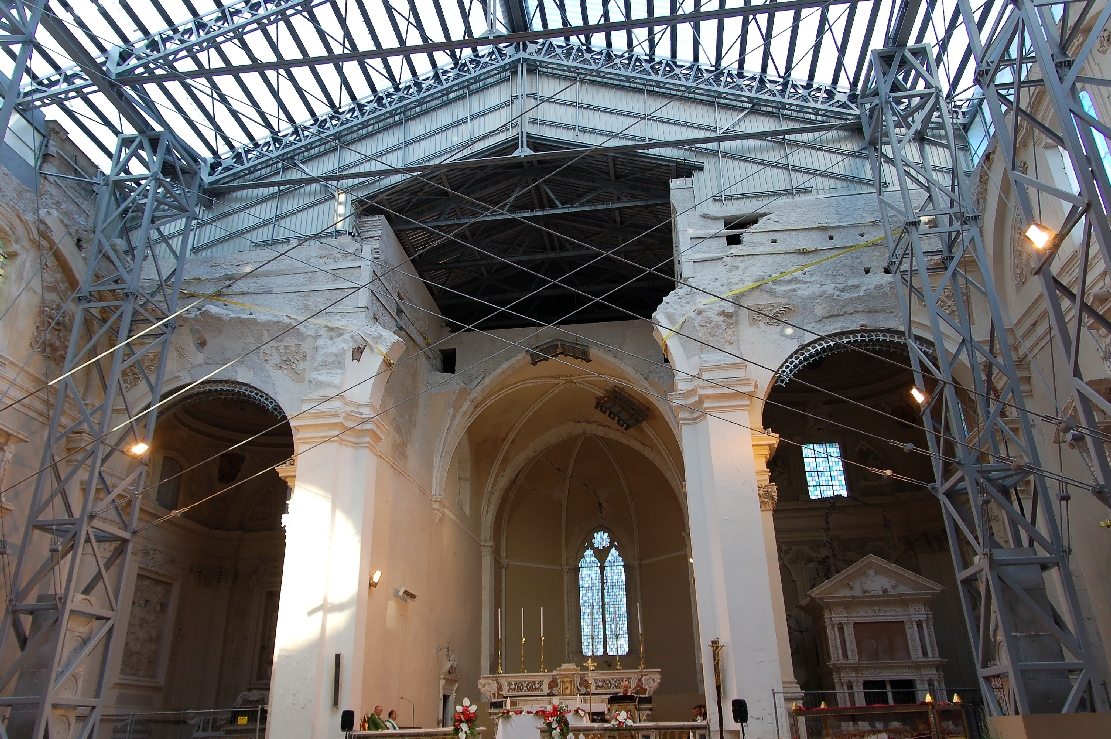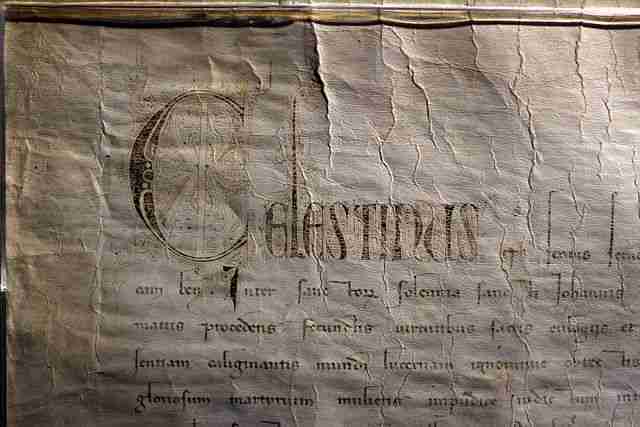Celestinian forgiveness celebration
On 28 and 29 August of each year in L’Aquila, Italy, people renew the solemn rite of Forgiveness (“Perdonanza”). That is, the perpetual plenary indulgence that Pope Celestine V granted to all the faithful of Christ. On the very evening of his coronation as pontiff. The Celestinian forgiveness celebration.
Before ascending to the papal throne, Pietro Angeleri, this was his secular name, spent many years living as an hermit. Especially in a cave on Mount Morrone, above Sulmona, receiving the nickname of Pietro del Morrone from his devotees.

On 5 July 1294, the conclave meeting designated him, in Perugia, as the successor of Pope Nicholas IV. Whose death had left the seat vacant for more than two years. From the hermitage of Sant’Onofrio to Morrone in which he had retired, Pietro, riding a donkey. And having as grooms King Charles II of Anjou and his son Carlo Martello, set off for L’Aquila.
In the Basilica of Santa Maria di Collemaggio
On 29 August 1294 in the Basilica of Santa Maria di Collemaggio, built by his own will and consecrated in 1288, he was elected pope. The solemn ceremony was attended not only by the two kings, cardinals and nobles. But above all by an immense people, made up, according to sources, of more than two hundred thousand people. Who received a gift of extraordinary importance from the new pontiff.
How many confessed and sincerely repentant, from vespers of August 28 to vespers of day 29 (the feast of St. John the Baptist). And had devotedly visited the basilica of Collemaggio, would have received the remission of sins. And absolution from punishment at the same time. Until then, the plenary indulgence had only been granted in favour of crusaders leaving for the Holy Land. And also pilgrims who went to the Porziuncola of Assisi. Mostly the prerogative of the rich. Who in exchange for substantial alms would have obtained at least the partial remission of sins. In L’Aquila the Forgiveness would have been renewed annually and also granted to the poor.
Also an economic impact
The Celestinian indulgence immediately appeared in its spiritual value but also in its political significance. As an opportunity to increase the economic and civil power of the young city. The extraordinary event benefited L’Aquila enormously. Spreading its fame and giving great impetus to the building development and commercial exchanges of the city.
On 29 September, the papal chancellery formalized the concession of Celestine V with the issue of a bull entrusted to the civil authority of the city. Which guaranteed its conservation, also claiming the right to the ceremony of forgiveness to which the religious authorities were only invited to participate.
The first solemn celebration took place in 1295. Against the will of Boniface VIII, pope in office. Who attempted to annul the Celestinian indulgence with a bull issued on August 18, 1295. The faithful, the monks of Collemaggio and the civil authority did not took care of the new pope’s provision. And, refusing to hand over the Bull. As they had been ordered, they immediately worked to ensure that the ceremony had the prominence that suited them. A solemn procession. In which the bishop and the clergy, dressed in suitable vestments, with crosses and banners, had to take part every year by statutory provision. Accompanied the Bull to the Basilica of Collemaggio, so that it could be read and shown to the faithful.
“Perdonanza” – Celestinian forgiveness celebration
The ceremony of Forgiveness, only with a modern term called “Perdonanza”, was particularly enriched after 1327. When the remains of Pope Celestino were “transferred” from Ferentino (near Frosinone), where they were kept, to Collemaggio. And his relics displayed to the people. It was in the fifteenth century, however, that the custom of entering Collemaggio through the Holy Door placed on the left side of the sacred building became established. According to what happened in the Roman patriarchal basilicas on the occasion of the jubilee.
Festivities take place during the entire week preceding the opening of the Holy Door. Generally between 23 and 29 August of each year. The three main events of the event are:
- the “Camino del Fuoco” (path of the fire) del Morrone (prior to the holiday week);
- the procession of the Bull and, finally,
- the opening of the Holy Door of the Basilica of Santa Maria di Collemaggio.
The first event of Perdonanza is the journey of the “Fire of Morrone”. This tradition goes back to the procession with which Pietro del Morrone, riding a donkey, left from the hermitage of Sant’Onofrio al Morrone (in Sulmona). And made his triumphal entry to Aquila on 27 July 1294. The re-enactment foresees that the torchbearers light the torch, the “Fire” in fact, in the Morronese hermitage and run it, with a journey of several days and crossing various municipalities, up to arrive in Piazza Palazzo, in L’Aquila. Where they light the tripod placed on the civic tower. The same where the Bull of Forgiveness is kept, generally on 23 August, thus starting the week of festivities.
The Procession on Celestinian Forgiveness Celebration
After the week of cultural and artistic events. A historical and civil procession takes place on 28 August that from Palazzo Margherita reaches the basilica of Santa Maria di Collemaggio. During which the Bull is paraded in front of the citizens.
The re-enactment sees the main civil and religious authorities parading along with numerous figures in period clothes of fifteenth-century style. A civil procession precedes the historical procession. Which includes numerous city associations. Another element of the procession is the presence of the banners of the historic districts of the city.
Within the figures, three main characters stand out, which are:
- the Dama della Bolla (the Lady of the Bull), who carries the Bull of Forgiveness;
- the Giovin Signore (the Young Lord), who accompanies the Lady. And carries the olive branch used in the opening of the Holy Door;
- the Signora della Croce (the Lady of the Cross). The girl who brings the gift (a “Cross” in fact) with which the citizenry thanks the one who will open the door.
The Holy Door
The route generally includes the passage through Piazza Palazzo, Corso Vittorio Emanuele, Corso Federico II, Viale Francesco Crispi. And Viale di Collemaggio up to the basilica.

The real indulgence begins on August 28 at sunset, that is, at the end of the historical procession; from the fifteenth century the entrance to the basilica of Santa Maria di Collemaggio was arranged through a side entrance. Which bears the name of the Holy Door. The ceremony provides for the delivery of the document by the Dama della Bolla to the highest civic authority (the Mayor). Who gives it public reading. Then a cardinal, specially designated by the Vatican, knocks three times on the door with an olive branch. Given to him by the Young Lord. And makes it possible to enter the basilica and therefore to achieve indulgence. Then the Mayor thanks the cardinal with the gift given to him by the Lady of the Cross.
The inhabitants of L’Aquila have always jealously guarded the Bull of Forgiveness. Owned by the Municipality and read by the Mayor on the evening of the 29th. The Holy Door of the Basilica of Collemaggio opens on the evening of August 28 by a Cardinal. At the end of a historical procession and represents the beginning of the Jubilee. The Archbishop of L’Aquila and the Mayor of L’Aquila close the door at Vespers the following day. A week of events accompanies the Feast of Forgiveness, from 23 to 30 August. Events, among which the concerts of the major personalities of the show stand out.
Hospitality, Solidarity and Peace
Enrolled by UNESCO in the Intangible Cultural Heritage List since 2019, the Celestinian Forgiveness celebration is a living testimony of a tradition that comes directly from the Middle Ages. It includes rites and celebrations handed down continuously since 1294. And which provide a sense of continuity and cultural identity to the entire community of the city. And the province of L’Aquila.
The historical parade involves the whole community. And has as main protagonists the Lady of the Bull, the Young Lord and the Lady of the Cross. The characters who symbolize the three traditional values that inspire the ceremony: hospitality, solidarity and peace.

In addition to being a strong element of the collective memory of the community, the Celestinian of Forgiveness is an example of resilience even in the face of natural disasters and emergencies. Such as the 2009 earthquake for the city of L’Aquila. Therefore the importance that the Celestine event represents, also as a key element for the construction of inclusive societies. And for the sustainable development of the territories.
So far the considerations of Unesco on the grounds of recognition as an intangible cultural heritage of humanity. Leaving out the relevant spiritual aspects of the first Jubilee in the history of Christianity. As they are irrelevant to the judgment of a secular world organization such as Unesco.
Resume
The Celestinian Forgiveness celebration is a historical-religious event. Held annually in L’Aquila, Italy, on 28 and 29 August. Pope Celestine V instituted the celebration in 1294. With the issue of the papal bull “Inter sanctorum solemnia” (also known as the Bull of Forgiveness). With which he granted a plenary indulgence to anyone, confessed that had entered the basilica of Santa Maria di Collemaggio, in the city of L’Aquila, from Vespers of 28 August to those of 29. Pope Celestine left the city of L’Aquila, but also the whole world, an inheritance of extraordinary importance. The Bull with which he granted a plenary and universal indulgence to all humanity, without distinction.
This event was established before the Universal Jubilee of the Catholic Church. Wished by Pope Boniface VIII in 1300 and has over time been accompanied by numerous other civic and historical events. Which take place throughout the last week of August. The anniversary has been “Heritage of Italy for tradition” since 2011. And UNESCO inscribed it in the “Representative List of the Intangible Cultural Heritage of Humanity” in 2019.
